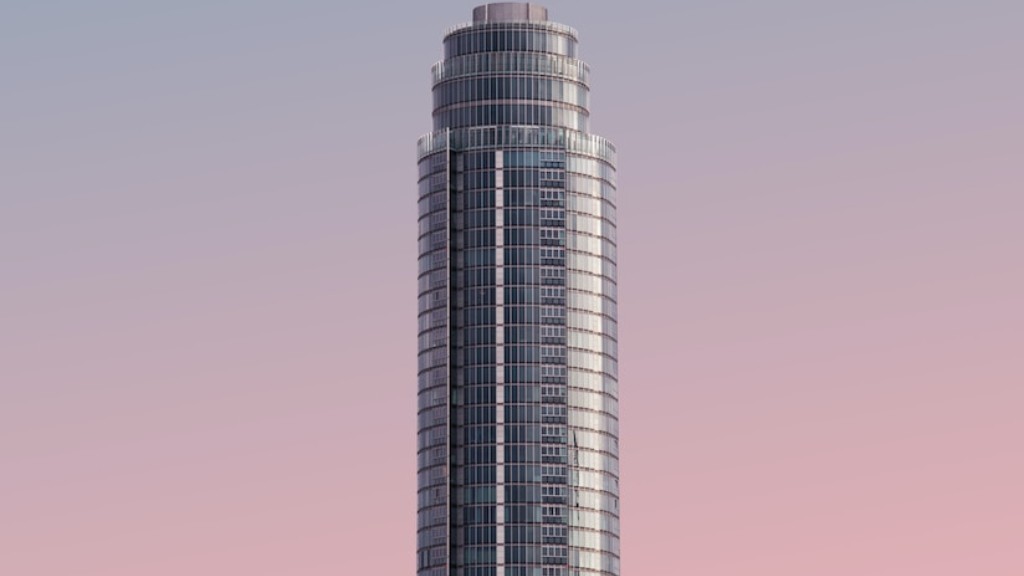Immediate Affects of Architecture on Poverty
Economic hardship in many regions of the world today has made combatting poverty a priority for governments and organizations on both a global and local scale. Architecture has proven to be a powerful tool for targeting and mitigating the prevalence of poverty in many areas. The construction of new public housing, for example, can help ease the cycle of poverty by providing families with safe, secure living environments and nearby access to community resources.
Studies have also shown that design elements in architectural projects can have an important impact on the health, welfare and comfort of low-income households. Proper ventilation, adequate lighting and access to an outdoors space, for example, can improve the mental and physical well-being of people who live in poverty. The utilization of locally sourced materials, energy-efficient technologies and renewable energy sources can also reduce the financial burden of utilities and maintenance.
Impartial Effects of Architecture on Poverty
Architecture has also been used to promote social interaction and community engagement, which can be especially beneficial for the elderly, disabled, or those living in sectors of poverty. In the United States, for example, urban planning initiatives have been developed to create low-income housing that serves as both a residential and a recreational facility, with residents feeling more welcome and connected to the surrounding neighborhood.
Architecture can also foster a sense of identity and pride in a community. Redesigning and improving existing public spaces, such as schools and parks, or erecting public monuments and artworks can provide poor households with a place to express themselves and to celebrate their own culture and identity. This is especially important in the slums or poorer neighborhoods of a city, where the dilapidated buildings often get less attention from potential investors or government institutions.
Additional Benefits of Architecture for the Poor
Unfortunately, poverty and its negative consequences are often deeply rooted in many areas around the world, and it is essential to note that architecture is capable of providing much more than just a more comfortable home. By creating accessible environments and maximizing the amount of natural light, ventilation and green space, an architect can help to reduce crime and increase safety in a neighborhood.
Moreover, architecture can provide the unemployed with a source of short-term employment. Funding and hiring local architects to construct the necessary buildings and infrastructure, or even simply to draw up and create plans and designs, can be beneficial in both creating much-needed jobs and in improving the local economic environment.
Exploring the Cultural Factors of Architecture for the Poor
In examining architecture for the poor, it is also necessary to consider the cultural differences and aspects of architectural design from one region to another. Different societies value and prioritize architecture in different ways, and training of local architects and volunteers to create buildings suited to the local cultural and aesthetic sensibilities can be a major driver of development.
Investing in the education and training of local architects, particularly those from low-income backgrounds or from disadvantaged communities, can help to ensure that those individuals can better utilize their talents in service to the community. By doing so, the potential risk of exploitation or exploitation of the vulnerable can also be minimized.
Investing in Architecture For The Poor – Forward-Looking Strategies
Finally, it must also be acknowledged that there are a many different models and approaches to architecture for the poor, and that there is no one-size-fits-all solution. Different regions will require different architectures, and governments and organizations investing in architecture for the poor must be cognizant of the regional context in order to ensure the best possible outcomes.
It is key to remember that architecture is a powerful tool that can be used both to fight poverty and to create vital infrastructure for communities in need. It is paramount that investment in this area is used in an efficient and effective manner, and that planning for the long-term should be a priority for all involved.
Conclusion of Funding for Architecture for the Poor
Ultimately, it is evident that architecture can be a powerful force in combating poverty around the world, even in the most neglected of communities. However, investment in architecture for the poor must be made with the view of both short-term gain and long-term sustainability. Investment and initiatives must also consider the regional and cultural differences in order to achieve the greatest possible outcome.
Local Benefits of Architecture for the Poor
Architecture for the poor can provide long-term benefits for local communities, including improved safety, better public services and facilities, and a sense of identity and pride in the local area. These benefits can be realized through investment in local architects and other specialized personnel, as well as in educational initiatives for the younger generations of the area.
In many impoverished regions, community-based organizations have formed to how local community members can build their own homes, as well as educational material on how to protect their homes from natural disasters or other hazards. This can be particularly beneficial in areas where local building codes and regulations do not exist or are not enforced.
Developing Sustainable Models of Architecture for the Poor
In the long term, there is considerable potential for the development of sustainable models of architecture for the poor. These models should take into account the special needs and circumstances of the local population, and should develop in ways that promote economic growth, stability, and resilience in the face of foreseeable, and unforeseeable, shocks and surprises.
More specifically, these models should consider not just the physical environment, but also the social and environmental concerns that could impact the region, such as access to healthcare, clean water, or employment opportunities. Additionally, investments in renewable energy sources should also be considered, and technologies such as solar, wind, or hydro-power can provide considerable savings for local households or organisations.
Contemplating Social Impact of Architecture for the Poor
Finally, the social impact of architecture for the poor must also be taken into account. The cultural values and norms found in a particular region or locality must be taken into account, and women and minority populations should be empowered to have a say in the development of their communities. This can be done through the creation of cross-cultural advisory committees or the forming of special task forces.
The goal of developing architecture for the poor should be to create an environment in which those living in poverty are able to develop the skills and knowledge necessary to participate in and benefit from public, private, and civil society services. By doing so, the region or city can not only alleviate some of the immediate problems of poverty, but also lay the groundwork for long-term systemic change in the future.


